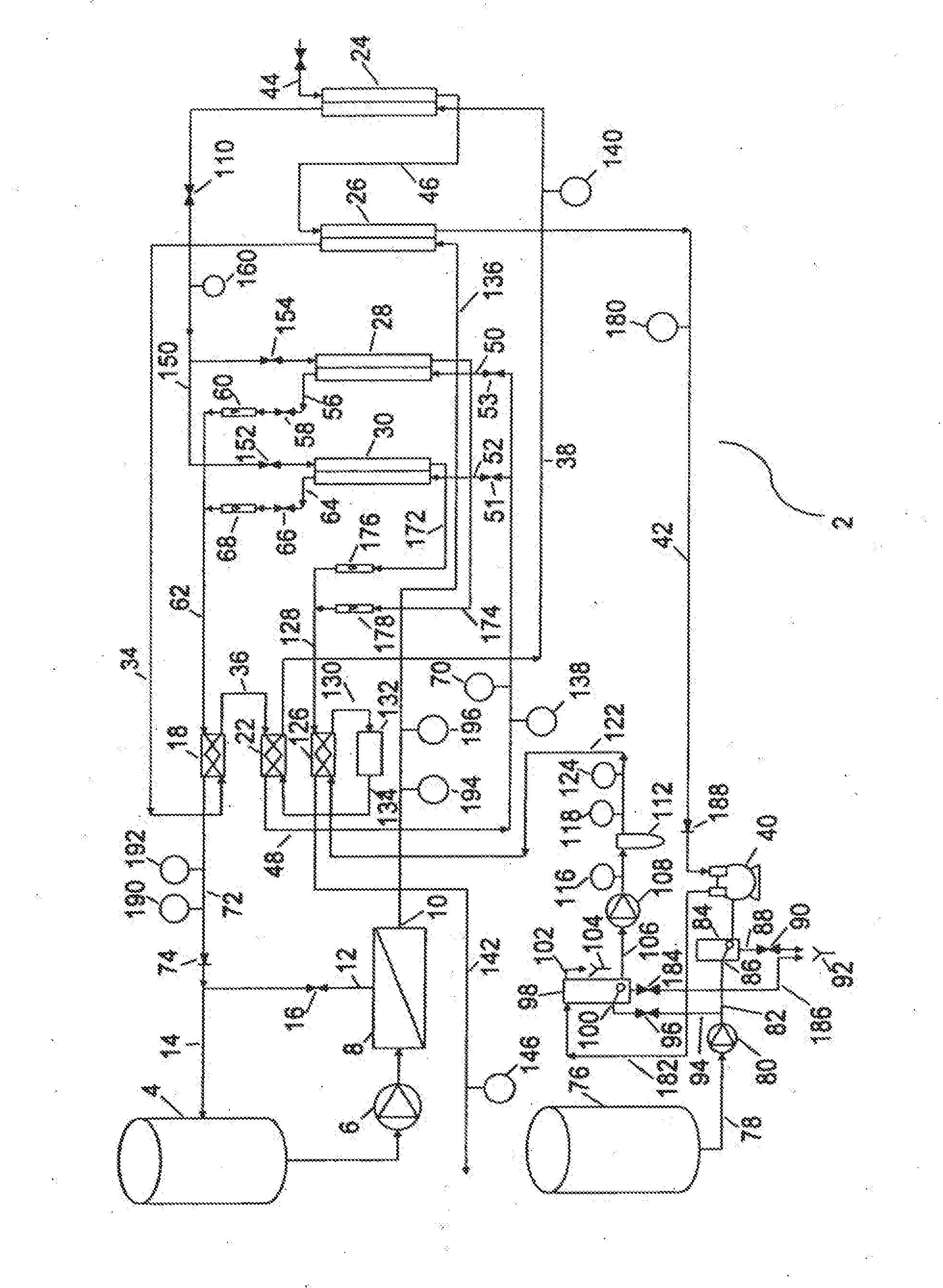Alcohol Reduction In Beverages
a technology of ethanol reduction and beverages, applied in the field of ethanol reduction in beverages, can solve the problems of reducing the perception of wine aroma and unpleasant hotness on the palate, affecting the taste of wine, and affecting the taste of wine, and achieve the effect of reducing the ethanol content of beverages
- Summary
- Abstract
- Description
- Claims
- Application Information
AI Technical Summary
Benefits of technology
Problems solved by technology
Method used
Image
Examples
Embodiment Construction
[0036]The diagram schematically illustrates a system 2 for producing reduced alcohol wine in accordance with the invention. The system 2 includes a tank 4 for storage of wine to be treated. Wine from the tank 4 passes to a pump 6 which pumps the wine at high pressure to a reverse osmosis unit 8. The reverse osmosis unit 8 has membranes therein which pass water and alcohol into the permeate while rejecting other desirable wine aroma, colour and taste components which are retained in the concentrated wine or retentate. The reverse osmosis unit 8 has a permeate outlet 10 and a retentate outlet 12. The outlet 12 is connected by means of a line 14 to the tank 4 for circulating the reduced alcohol wine. The line 14 includes a back pressure control valve 16 which effectively controls the pressure in the reverse osmosis system 8 and outlet 12. The membranes in the reverse osmosis unit 8 can typically be in the form of spiral wound reverse osmosis or nanofiltration membranes such as GE Osmon...
PUM
| Property | Measurement | Unit |
|---|---|---|
| temperature | aaaaa | aaaaa |
| temperature | aaaaa | aaaaa |
| temperature | aaaaa | aaaaa |
Abstract
Description
Claims
Application Information
 Login to View More
Login to View More - R&D
- Intellectual Property
- Life Sciences
- Materials
- Tech Scout
- Unparalleled Data Quality
- Higher Quality Content
- 60% Fewer Hallucinations
Browse by: Latest US Patents, China's latest patents, Technical Efficacy Thesaurus, Application Domain, Technology Topic, Popular Technical Reports.
© 2025 PatSnap. All rights reserved.Legal|Privacy policy|Modern Slavery Act Transparency Statement|Sitemap|About US| Contact US: help@patsnap.com

